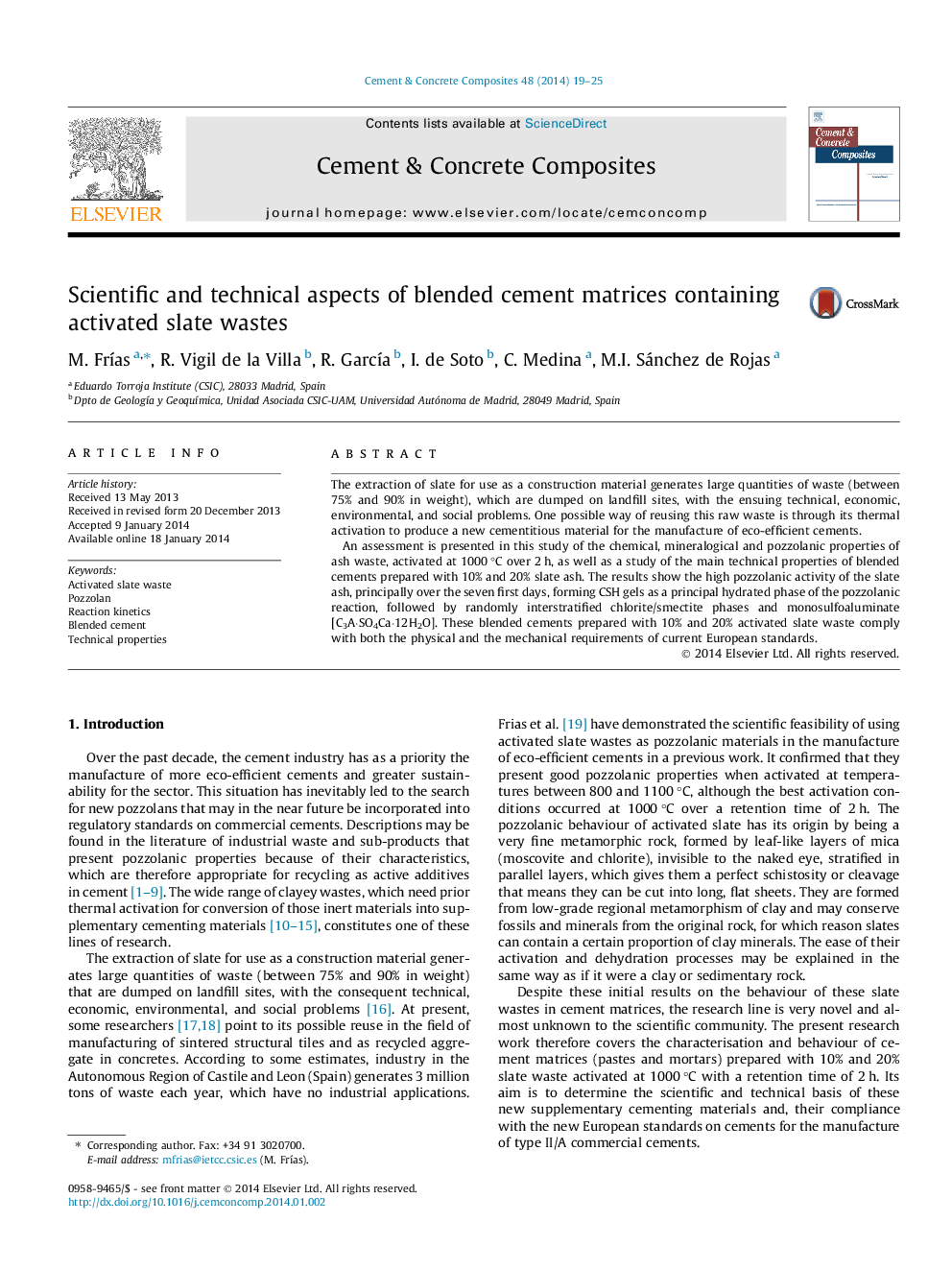| Article ID | Journal | Published Year | Pages | File Type |
|---|---|---|---|---|
| 1454743 | Cement and Concrete Composites | 2014 | 7 Pages |
The extraction of slate for use as a construction material generates large quantities of waste (between 75% and 90% in weight), which are dumped on landfill sites, with the ensuing technical, economic, environmental, and social problems. One possible way of reusing this raw waste is through its thermal activation to produce a new cementitious material for the manufacture of eco-efficient cements.An assessment is presented in this study of the chemical, mineralogical and pozzolanic properties of ash waste, activated at 1000 °C over 2 h, as well as a study of the main technical properties of blended cements prepared with 10% and 20% slate ash. The results show the high pozzolanic activity of the slate ash, principally over the seven first days, forming CSH gels as a principal hydrated phase of the pozzolanic reaction, followed by randomly interstratified chlorite/smectite phases and monosulfoaluminate [C3A·SO4Ca·12H2O]. These blended cements prepared with 10% and 20% activated slate waste comply with both the physical and the mechanical requirements of current European standards.
